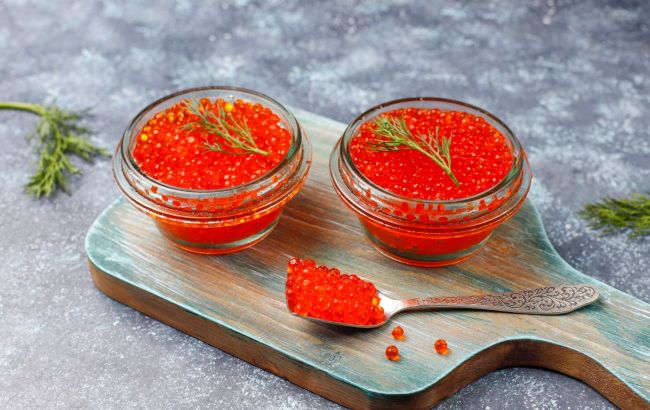Choosing the best caviar: Nutritionist's tips
 How to choose high-quality red caviar (photo: Freepik)
How to choose high-quality red caviar (photo: Freepik)
Buying red caviar for the New Year's table is a tradition. Unfortunately, the market often has counterfeit or low-quality products. When choosing caviar, consider several factors to avoid a disappointing purchase. Nutritionist Anastasiia Holoborodko shares insights on the types of caviar and how to choose it wisely on Telegram.
What to consider when choosing red caviar
"Eastern Europe leads in consumption in Europe, with Japan being a global leader. In 2019, Japan imported 30 times more caviar than Ukraine. Other regions either aren't accustomed to eating fish roe or only consume fillets. However, the nutritional benefits and density in organs and connective tissues — skin, swim bladders, tails — are significantly higher," says the expert.
Alaska, Norway, Iceland, and Canada are the main regions specializing in caviar. Over 95% of Norway's salmon is from aquaculture. Herring and cod in Norway are wild.
"The waters of Norway are environmentally clean, but red caviar is extracted from aquaculture fish, and there is no regulation on harvesting," says Holoborodko.
In Canada, both wild and aquaculture salmon are available. Iceland doesn't produce salmon roe; the rest of the fish there are wild. Aquaculture is entirely banned for all fish species in Alaska.
Varieties of caviar:
- Pink salmon roe - a small salmon variety, orange-pink, not rare, with a sweet taste.
- Chum salmon roe (keta) - large and not rare, characterized by a distinctive flavor.
- Sockeye salmon roe - the densest type, similar to dense meaty varieties like tuna. Small, intense, and pleasantly bitter.
- Coho salmon roe - soft and neutral, offering the least pronounced flavor. Appeals to those who dislike intense fish taste but enjoy omega-3 snacks.
- Chum salmon roe - the first to spawn, featuring large and dense roe with an aromatic quality.
How to choose quality caviar
"Caviar beads should be transparent and clear. The hierarchy dictates that denser and cleaner caviar is of a higher class. The less salt, the clearer and more intact, the better. Ideally, caviar should be undamaged. Modern preservation methods, like vacuum packaging, may visually compress the beads, especially those near the jar's wall," explains Goloborodko.
Given its perishable nature, part of the caviar is pasteurized, and some include preservatives. In Ukraine, E200, E211, among others, are used. For those seeking a fresh product with only added salt, frozen options are recommended. Alternatively, choose defrosted and vacuum-packed caviar, which stays fresh for a few days.
"In terms of nutritional value, caviar boasts high concentrations of two primary Omega-3 fatty acids in an ideal, even therapeutic dose. Vitamin A, beneficial for immunity, and a small amount of iron are also present. Two tablespoons of caviar meet the daily iodine requirement. Apart from salmon, good caviar can come from herring or cod, lacking refined oil and preservatives," notes Goloborodko.
This material is for informational purposes only and should not be used for medical diagnosis or self-treatment. Our goal is to provide readers with accurate information about symptoms, causes, and methods of detecting diseases. RBС-Ukraine is not responsible for any diagnoses that readers may make based on materials from the resource. We do not recommend self-treatment and advise consulting a doctor in case of any health concerns.

